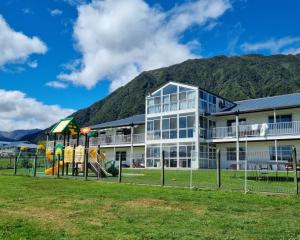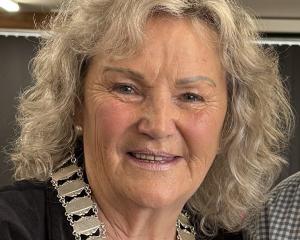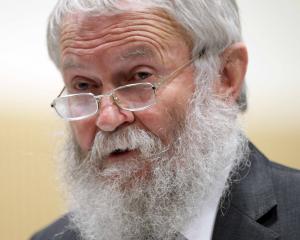Mr Long is not enthusiastic about the prospect of the area's remoteness being brought to an end by a proposed new road between Haast and the Milford highway and as he told Mark Price this week, living without roads does not mean a life of isolation.
In September 1980, Robert Long was fresh from travels in India, had a few dollars in his pocket from picking apples and was on the road, hitchhiking towards Stewart Island "ready for the sea, the forest and some wide open spaces".
Bluff fisherman Buntie McCrystal and his wife, Ivy, stopped to pick him up and within a few days Mr Long was steering their boat through the night towards Puysegur Point in Fiordland.
"Just pick a bright western star and follow it," were his instructions.
"The moon was full and, as we neared Fiordland across and out from Te Wae Wae Bay, the snow on the mountains sparkled with brilliant white light.
"I was seeing for the first time the crystalline, pristine nature of Fiordland, which was to be my home territory..."
Thirty years on, the rugged southwest of the South Island remains his home and, as he told the Otago Daily Times this week, he has every intention of continuing to live in the Gorge River hut he and wife Catherine and their two children, Christan and Robin, call home.
Gorge River is between two better-known remote places in South Westland - Martins Bay and Jackson Bay.
For trampers, it is just one more obstacle on the track between Jackson Bay and the Hollyford Valley; for pilots, it is the location of a short, tricky airstrip, and for most of those who live in Fiordland or South Westland, it is the home of "Beansprout".
Mr Long says he was given the nickname by one of his distant neighbours because when he went visiting he turned down chops and steak in favour of his own bean sprouts.
At that time, he was vegetarian and he writes with relish of the Southland swedes, pumpkins and potatoes served up by neighbours during his first long, cold winter at the river.
Mr Long struggled to establish his own garden in salty, acidic soil and his only real success was with cabbages.
So, he would collect seed heads from sedge grasses in late autumn and grind them into flour on a large flat stone.
He would then mix the sedge flour with wheat flour and cook flat cakes on top of his stove.
The cakes were his staple food for many years.
Dried "bull kelp" was also frequently on the menu, the thinner ends "eaten like crisps" and the dried fronds ground into powder for soup or bread.
Kelp could also be eaten as a jelly added to doughs or stews, or as a dessert with milk and sugar.
Mr Long says he still eats food from the bush, especially if he is tramping and not wanting to carry too much.
"I'll still harvest supplejack shoots... I still use koromiko... we still occasionally eat kelp and the sea lettuce.
"You try the coprosma berries and the fuschia berries. I don't rely on them as much as I did but if you needed to, you could.
"One of the reasons I wanted to live like that was so that I could actually be able to survive without all the modern conveniences so if there came a time ...
"It'd be really difficult, I'll tell you that."
The family eats a lot of fish and shellfish and "whatever you can get out of the forest".
Asked if he had qualms about adding supermarket food to his family's diet, Mr Long joked "Not when you're hungry ..."
Mr Long is tall and lean, with long hair and an engaging humour honed over countless cups of tea in small huts on wet Fiordland days.
Far from living a hermit-like existence, Mr Long greets an endless procession of visitors - friends, pilots, fishermen, hunters, trampers and tourists - most of whom stop for "a brew".
"Most of our visitors come in aircraft. We had about 150 landings at Gorge River last year."
He estimates the number had doubled since 1980 as their location became better known.
"People sort of got to be friends with us and they know they are welcome to come there.
"So we get people like dairy farmers and sheep farmers. They have their pet aeroplanes, or their pet choppers, and they love to come down to Fiordland.
"We're not totally isolated. I get regular visitors that come from Hong Kong and people from Hawkes Bay, Auckland, Nelson, Christchurch, Dunedin and all through."
Mr Long met his future wife, Catherine Stewart, when she and a friend were looking for a guide for a 10-day trip into the Pyke Valley, north of the Hollyford.
The trip took them to Gorge River and Mr Long writes: "I knew it would require a unique person to actually live here for the long haul."
They were married in 1992.
Mr Long says he had never been seeking complete isolation.
"Not really. No. It was just sort of to be in a wild place and express myself."
"I'm lucky I ended up having a family because I always wanted to have a family.
"And I'm also lucky because other people come and visit you, or just happen to be there hunting or fishing."
At times, the idea of a road linking Haast and Milford Sound appeals to him, so that friends could visit more frequently, but mostly he considers the area does not need one.
"People have got to realise it's got an intrinsic value the way it is, even though some people would like to see that form of progress.
"It's probably a valid form of progress, but I think they need to realise they are not going to be doing that particular area a favour because it's actually got an intrinsic value which is pretty valuable the way it is.
"I would prefer if there wasn't a road through there because I love the wilderness and I think it would alter the spirit of the place."
Mr Long spent two days walking out of the bush to talk to the media about his book.
In his pocket, he carries an old flour bag containing greenstone carvings he is working on between media interviews because even someone who lives in the wilds of South Westland, with crayfish, whitebait and supplejack at his door, needs a little hard cash to survive.











